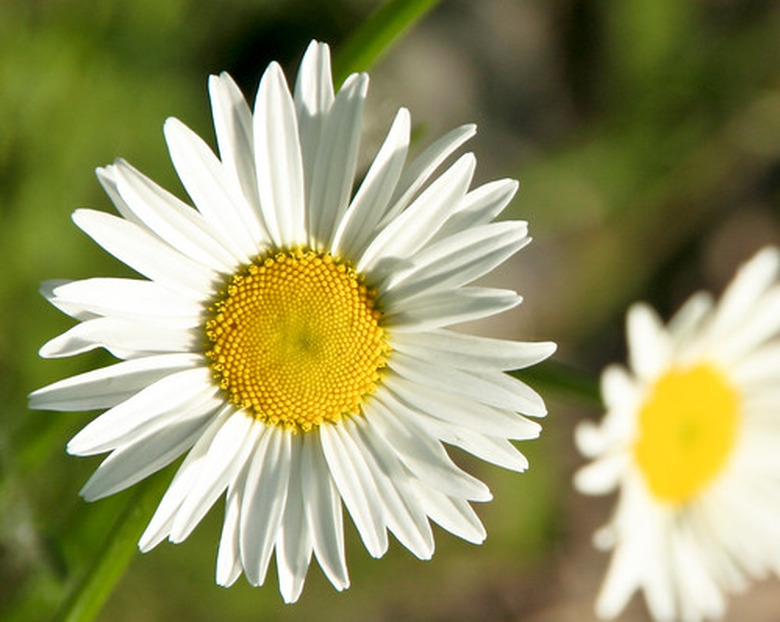Plant Structure Of A Daisy
Daisies are white multi-petaled flowers with yellow centers. They are widely recognized, and are often included in flower arrangement. This simple flower has a delicate beauty, often associated with cheerfulness and a carefree spirit. The word daisy is derived from the Anglo-Saxon "daes eage," which means "day's eye," so named because the daisy blooms with the rising sun.
Leaves
Daisies are perennial plant. The evergreen leaves form a rosette which hangs low to the ground. Daisy leaves are shiny and are oval and spoon-shaped. This rosette of leaves forms first, and the daisy blossom shoots up in the center of the rosette.
- Daisies are white multi-petaled flowers with yellow centers.
- This simple flower has a delicate beauty, often associated with cheerfulness and a carefree spirit.
Flower Head
The flower head is comprised of several oblong white petals surrounding a yellow center. The collection of leaves are referred to as the calyx.
The center of the daisy contains the pollen, stamen (male reproductive system), and pistil (female reproductive system). The male stamen has two parts: the anther and the filament. Pollen is created by the anther.
Stem
The stems of the daisy are firm and strong. They stand erect or have an upward curvature. Stems grow to a height of between 8 and 36 inches. The lower leaves on the stem are darker and fleshier than those that grow at the top.
- The flower head is comprised of several oblong white petals surrounding a yellow center.
Roots
Daisies have strong, vigorous root systems. The thick, deep roots enable them to seek out moisture below the soil's surface. Daisies are hardy perennials due in part to the strength of their root systems.
Whole Plant
Daisy plants, as a whole, are strong, hardy plants. They grow quickly and require little care other than regular watering. To propagate a daisy plant, dig up a large daisy plant and use a sharp knife to divide its large root ball. Plant the halves separately, and each half will repair and develop a separate root system.
- Daisies have strong, vigorous root systems.
- Plant the halves separately, and each half will repair and develop a separate root system.
